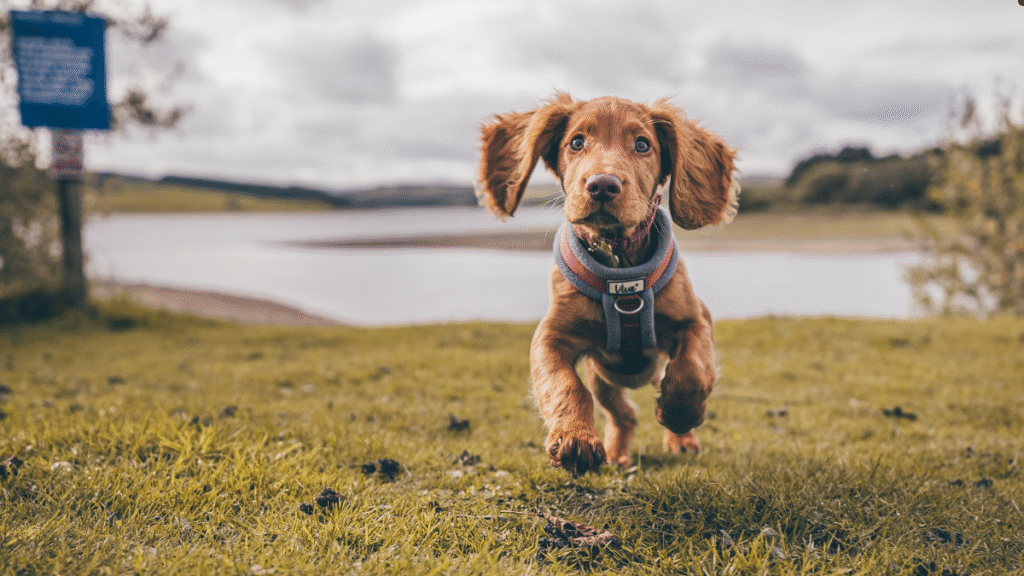Bringing a new puppy home is an exciting time for every dog lover. Puppies are incredibly adorable, playful, and full of life, but all that cuteness can quickly turn into chaos without proper training. Luckily, training your puppy at home is one of the most effective ways to build trust, discipline, and a loving bond with your pup.
In this complete guide, we’ll show you how to train a puppy at home step by step, covering everything dog owners need to know to raise a happy, well-behaved dog.
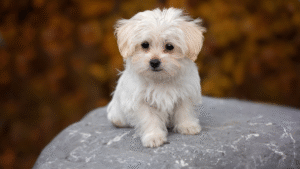
Step 1: Prepare Your Home for Puppy Training
You need to create the right home environment for training before your new furry family member even arrives.
Puppy-Proof Your Home
Puppies are naturally curious. They will chew, bite, and explore anything they come in contact with.
-
Move or secure all electrical cords.
-
Keep shoes, socks, and small objects out of reach.
-
Block off rooms or areas that are not puppy-safe.
-
Store cleaning supplies and medications out of reach.
Creating a structured, safe environment helps your puppy feel comfortable and ready to start training on the right paw.
Gather Essential Training Supplies
Before your puppy’s arrival, gather the following items to start training at home:
-
Crate or playpen for crate training and safety.
-
Training treats for rewards.
-
Leash and collar for walks and obedience.
-
Puppy pads if you plan to use them for potty training.
-
Toys for mental stimulation and teething relief.
With your home prepared and supplies ready, you’re set for the exciting moments ahead.
Step 2: Establish a Routine
Puppies need consistency and structure. A regular daily routine helps them understand what to expect, reduces stress, and makes training easier.
Feeding Schedule
Feed your puppy at the same times every day, typically three to four times for younger pups. Consistent meal times help regulate bathroom habits, which is essential for potty training.
Bathroom Schedule
Take your puppy outside (or to a designated potty spot) after:
-
Waking up
-
Eating or drinking
-
Playing or exercising
-
Napping
Consistency will help them learn faster where and when to eliminate.
Sleep and Play Schedule
Puppies sleep around 18–20 hours a day in the first few months. Balance their nap times with short periods of engaging play and exercise.
Step 3: Start Potty Training Early
Potty training is one of the first things to teach your puppy at home. It takes patience, but with consistency, your puppy can learn quickly.
How to Potty Train a Puppy at Home
-
Choose a designated potty area. Whether it’s your backyard or puppy pads indoors, consistency is key.
-
Use a command. Say a simple phrase like “Go potty” each time you take your puppy outside. Over time, they’ll associate the command with the action.
-
Reward immediately. As soon as your puppy finishes, praise them and give a small treat. Positive reinforcement encourages repetition.
-
Watch for signs. Puppies often sniff, circle, or whine when they need to go.
-
Avoid punishment. If your puppy has an accident indoors, never scold or rub their nose in it. Clean the area thoroughly to remove odors and continue your routine.
With patience and consistency, most puppies become largely potty trained within a few weeks.
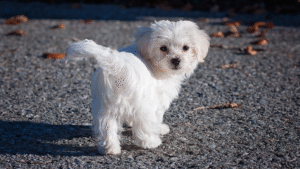
Step 4: Crate Training
Crate training gives your puppy a safe, cozy space to feel secure. It also aids with house training and helps prevent anxiety.
How to Crate Train a Puppy
-
Choose the right size crate. Your puppy should be able to stand, turn around, and lie down comfortably, but not have so much space that they use one corner as a bathroom.
-
Make it inviting. Add a soft blanket and a few toys, and place the crate in a quiet but accessible area.
-
Introduce it gradually. Leave the crate door open at first and encourage your puppy to explore it voluntarily.
-
Feed meals inside the crate. This builds positive associations.
-
Increase crate time slowly. Start with short sessions and gradually lengthen them as your puppy becomes comfortable.
Step 5: Teach Basic Obedience Commands
Once your puppy is home and potty training is underway, it’s time to begin obedience training. Basic commands form the foundation of good behavior and safety.
Essential Commands to Teach Your Puppy
-
Sit: Hold a treat near their nose, move it upward, and say “Sit.” Reward them when they comply.
-
Stay: Have your puppy sit, say “Stay,” and take a small step back. Reward them if they remain in place, gradually increasing the distance over time.
-
Come: Use a cheerful tone and say “Come” while crouching down. Reward them when they approach you.
-
Down: Hold a treat in your hand, move it to the floor, and say “Down.”
-
Leave it: This command prevents your puppy from picking up harmful or unwanted objects.
Keep training sessions short—five to ten minutes at a time—and always end on a positive note. Never punish your puppy for not getting it right; patience and encouragement go a long way.
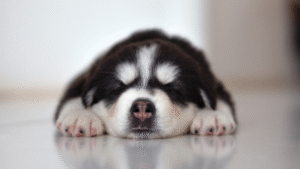
Step 6: Socialization
Proper puppy socialization is one of the most important parts of raising a confident, friendly dog. Puppies are most receptive to new experiences between 8 and 16 weeks of age.
How to Socialize a Puppy
-
Expose your puppy to new environments—different sounds, surfaces, and places like parks and sidewalks.
-
Arrange controlled playdates with vaccinated, well-behaved dogs.
-
Let your puppy interact with friends, family, neighbors, children, and people of all types.
-
Introduce them to everyday sounds such as vacuum cleaners, doorbells, and traffic.
Socialization reduces fear, aggression, and anxiety later in life. It helps your puppy learn to adapt to different situations and people with confidence.
Step 7: Handle Biting and Chewing Behavior
All puppies bite and chew—it’s a natural way to explore the world, relieve teething pain, and release energy. However, you need to guide them toward appropriate behavior.
How to Stop Puppy Biting
-
Redirect their biting. If your puppy bites your hand, calmly replace it with a chew toy.
-
Use a firm “No” or “Ouch.” Say it once and withdraw attention for a few seconds. Puppies learn that biting ends playtime.
-
Provide plenty of toys. Offering different textures keeps them entertained and less likely to chew furniture or shoes.
-
Avoid rough play. Wrestling and similar games can encourage biting.
Consistency and calm redirection work far better than yelling or physical punishment.
Related:5 Steps In Teaching Your Dog The Quiet Command
Step 8: Leash Training
Leash training helps your puppy learn to walk calmly beside you without pulling.
How to Leash Train a Puppy
-
Start indoors. Let your puppy wear the collar and leash for short periods inside first.
-
Encourage movement. Call your puppy to you and reward them for walking at your side.
-
Go outside. Begin walking in a quiet area with few distractions.
-
Stop pulling. If your puppy starts to pull, stop walking and wait for them to return to your side.
-
Reward and continue. Once they’re calm and focused, reward them and resume walking.
Leash training takes patience, but with consistency, your puppy will learn to walk nicely by your side.
Step 9: Positive Reinforcement Training
The best way to train your puppy at home is through positive reinforcement—rewarding good behavior instead of punishing bad behavior.
Why Positive Reinforcement Works
-
Builds trust between you and your puppy.
-
Encourages your puppy to repeat good behaviors.
-
Creates a fun, engaging training environment.
Use treats, praise, and affection to reward good behavior immediately. Over time, you can reduce treats and rely more on praise and petting. Avoid yelling or punishment—it only creates fear and confusion.
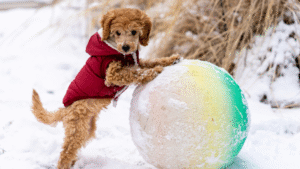
Step 10: Be Patient and Consistent
Every puppy learns at a different pace. Training takes time, patience, and persistence. Follow these golden rules of puppy training:
-
Keep sessions short and fun.
-
Repeat commands consistently.
-
Stay calm and patient when accidents happen.
-
Always end on a positive note.
-
Be consistent across all family members—mixed messages confuse your puppy.
Common Puppy Training Mistakes to Avoid
Even well-meaning puppy owners make mistakes. Here are some to watch out for:
-
Inconsistent rules and boundaries: Stick to one set of rules for everyone.
-
Overusing treats: Gradually reduce treat use to prevent dependency.
-
Skipping socialization: Fearful or aggressive dogs often result from lack of socialization.
-
Neglecting mental stimulation: Provide puzzle toys and training games to keep your puppy’s mind active.
-
Expecting perfection too early: Remember, puppies are still learning. Progress takes time.
Final Thoughts
Training your puppy at home is about more than just teaching commands—it’s an opportunity to build a relationship based on trust, respect, and communication.
By now, you should have a clear understanding of how to train a puppy at home step by step, and how to create a positive environment where your puppy feels safe, loved, and eager to learn.
The time and effort you invest in the early months will pay off for years to come. A well-trained puppy will grow into a confident, obedient, and happy dog—a loyal companion for life.
- 5 Cheap Alternatives To Dog Training Equipment - November 12, 2025
- Homemade Calming Spray To Help Dogs During Training - November 12, 2025
- 7 DIY Dog Training Tools You Can Make From Household Items - November 12, 2025
